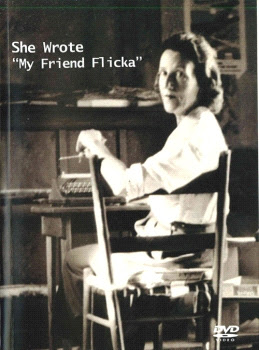Too bad, but it seems the great works of Mary O’Hara seem to be long forgotten in Wyoming. She lived in the Cowboy state for 16 years (1930-1946) and during that time wrote many books. Three of her novels stand out today as Wyoming classics, Thunderhead, Green Grass of Wyoming and My Friend, Flicka.
O’Hara was born and raised on the east coast but spent here early writing life in California working successfully in the silent movie industry. After a divorce and, several years later, a remarriage, she moved with her new husband to Wyoming.
O’Hara’s husband, Helge Sture-Varsa was a swede with army horse raising and training experience. The two bought a ranch in the windswept high country between Laramie and Cheyenne that would become became the famous, Remount Ranch.
They tried to make a living raising sheep and may have been successful if it were not for bad timing, The Great American Depression was just around the corner. They ended up eking out a living delivering milk and raising horses but it was her writing that would pay the bills.
In 1946, after a second divorce she moved back east and continued writing, but not so much about Wyoming. She also composed music and was a rather successful musician along with her musical scores.
Her books are rich with Wyoming landscape, weather and animals and her love of horse’s shows throughout her works.
O’Hara died at the age of 95 after a rich and rewarding life of writing, composing and travel.
Still great reading today – give her a try. Unfortunately it looks, after a quick search, that none of her books have been converted to e-book formats. But there are many choices of new and used copies available from one cent up to a bit over ten dollars.
I do believe that, summer has, at long last, reached Wyoming. Feeling good!




